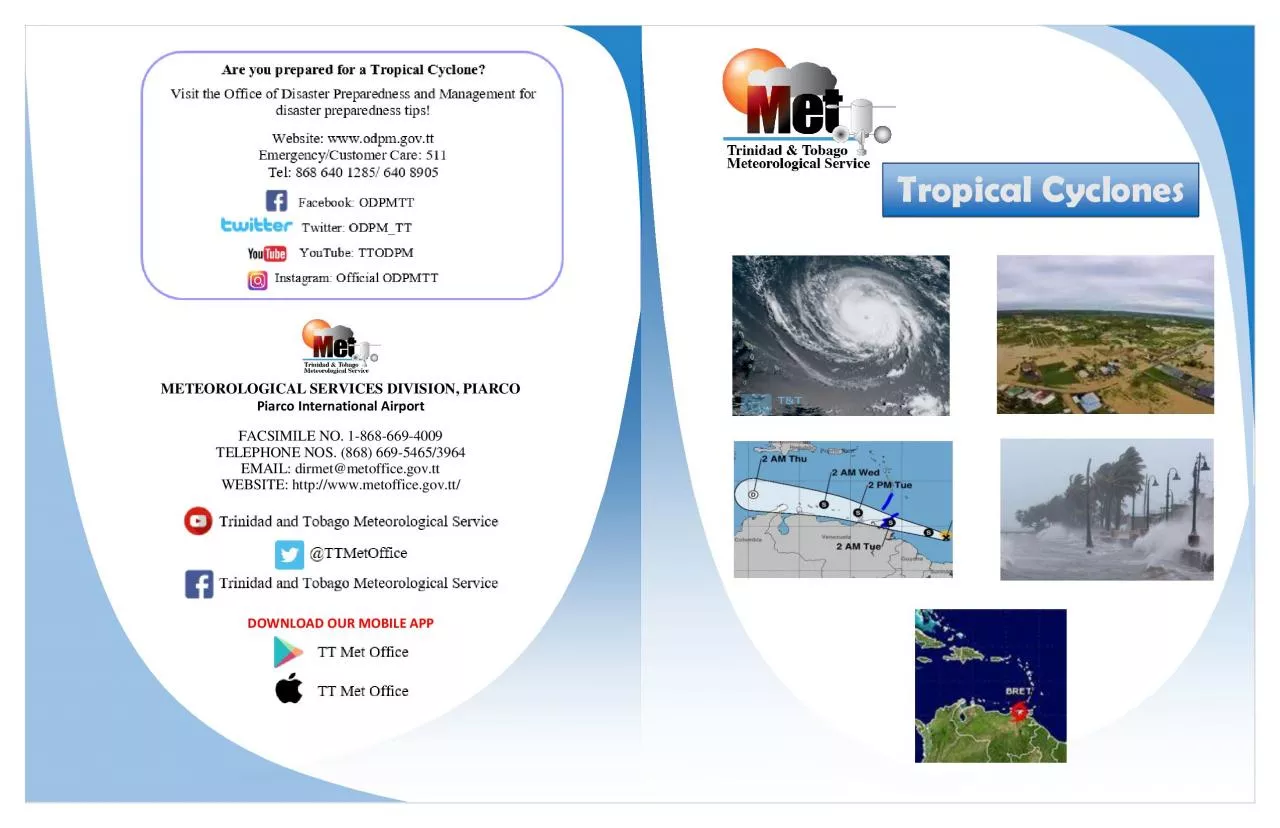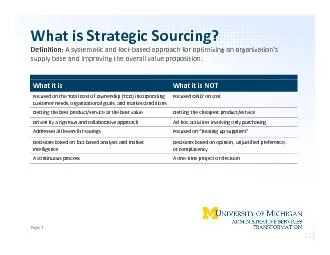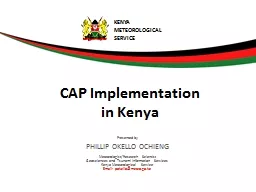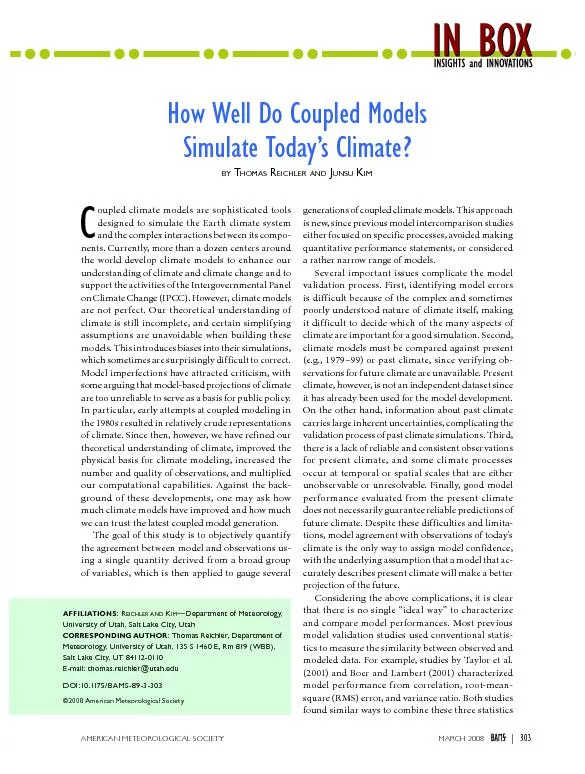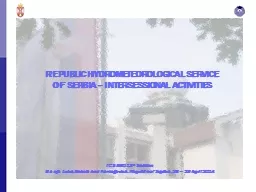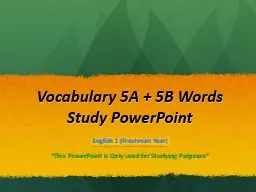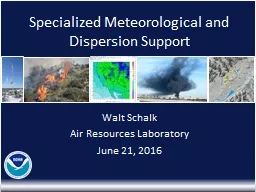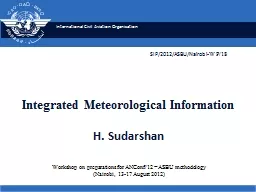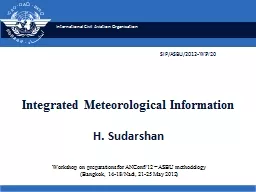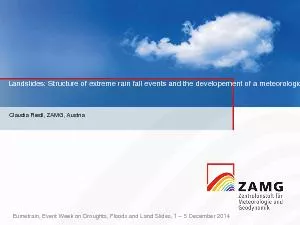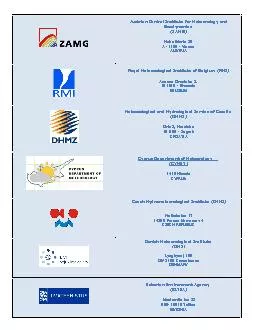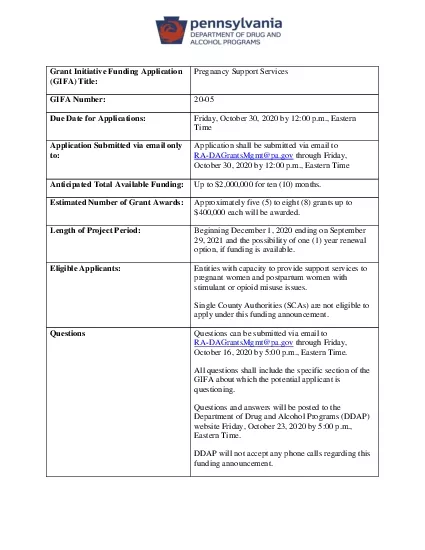PDF-METEOROLOGICAL SERV
Author : jocelyn | Published Date : 2022-08-21
ICE S DIVISION PIARCO Piarco International Airport FACSIMILE NO 1 868 669 4009 TELEPHONE NOS 868 669 54653964 EMAIL dirmetmetofficegovtt WEBSITE httpwwwmetofficegovtt DOWN
Presentation Embed Code
Download Presentation
Download Presentation The PPT/PDF document "METEOROLOGICAL SERV" is the property of its rightful owner. Permission is granted to download and print the materials on this website for personal, non-commercial use only, and to display it on your personal computer provided you do not modify the materials and that you retain all copyright notices contained in the materials. By downloading content from our website, you accept the terms of this agreement.
METEOROLOGICAL SERV: Transcript
Download Rules Of Document
"METEOROLOGICAL SERV"The content belongs to its owner. You may download and print it for personal use, without modification, and keep all copyright notices. By downloading, you agree to these terms.
Related Documents

